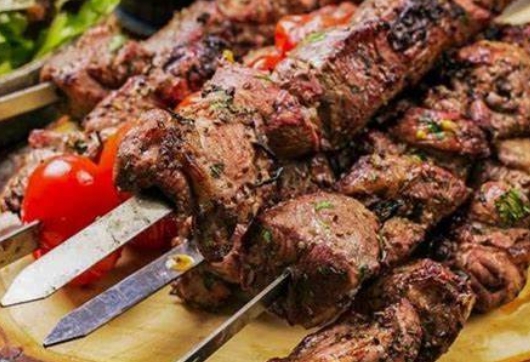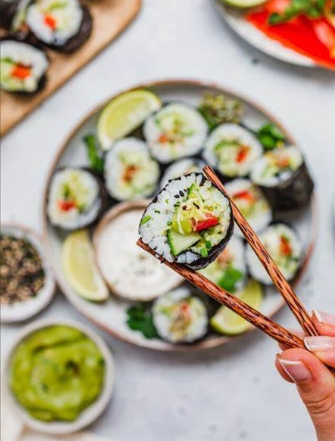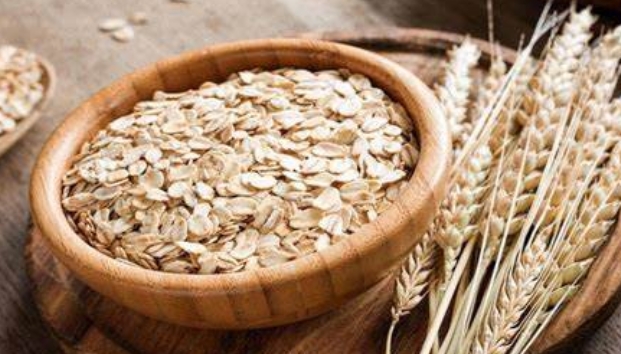Kebap, or kebab, is a cornerstone of Turkish cuisine and a dish that has captured the hearts of food lovers worldwide. Known for its juicy, smoky flavors and variety of preparation styles, kebap is enjoyed across Turkey, from street food vendors to high-end restaurants. Whether served on skewers, in a sandwich, or with rice, kebap is a versatile dish that can be tailored to suit different tastes, making it an iconic symbol of Turkish culinary culture.
The origins of kebap can be traced back to the Ottoman Empire, where it was initially a way to cook meat over an open flame. Over the centuries, the practice of grilling meat became refined and regionalized, with each part of Turkey adding its own spin to the dish. Kebap is not just one type of food but encompasses a range of grilled meats, from lamb and beef to chicken and even fish, all of which are seasoned with a variety of spices and herbs.
One of the most well-known types of kebap is Adana kebap, named after the city of Adana in southern Turkey. This version is made from ground lamb mixed with red pepper, onions, and spices, which is then molded onto a long metal skewer and grilled over charcoal. The result is a flavorful, spicy kebap with a slightly crispy exterior and a tender, juicy interior. Adana kebap is often served with flatbread, grilled vegetables, and a side of pilaf or salad, creating a well-balanced and satisfying meal.
Another popular kebap is İskender kebap, which hails from the city of Bursa. This dish is made from thinly sliced lamb or beef that is cooked on a vertical rotisserie, similar to the method used for shawarma. The meat is then served on a bed of pita bread soaked in tomato sauce, topped with yogurt, and drizzled with butter. The combination of the tender meat, the tangy yogurt, and the rich, buttery sauce creates a comforting and indulgent dish that is a favorite among locals and visitors alike.
In addition to these iconic kebaps, Turkey boasts a wide range of regional variations. For instance, Şiş kebap is made by marinating chunks of meat, such as lamb or beef, in a mixture of spices and yogurt before threading them onto skewers and grilling them over an open flame. This version of kebap is typically served with rice, flatbread, and grilled vegetables, offering a hearty and satisfying meal.
There’s also the Urfa kebap, which is similar to Adana kebap but made with less spice. This milder version is often paired with sumac onions, fresh herbs, and a squeeze of lemon juice to enhance the flavors.
Kebap is not just about the meat—it’s also about the flavors and the grilling technique. The meat is often marinated for hours before cooking to ensure that it absorbs the spices and becomes tender. The use of charcoal grilling imparts a smoky flavor that is an essential element of the dish. The grilling process is an art, requiring precision to ensure the meat is cooked to perfection—juicy and tender on the inside while achieving a crisp, flavorful crust on the outside.
Kebap is typically served in a variety of ways. It can be enjoyed as part of a large meal, with several types of kebap served alongside appetizers such as hummus, baba ghanoush, and tabbouleh, or as a quick street food snack. When served as street food, kebap is often rolled in lavash or pita bread, creating a kebap wrap that’s perfect for eating on the go. The kebap is usually topped with fresh vegetables, like tomatoes, onions, lettuce, and a drizzle of yogurt or garlic sauce.
The popularity of kebap is not limited to Turkey—its influence can be seen across the Middle East, Central Asia, and even parts of Europe. The dish has been adapted and reinvented in various forms, from the kebabs you might find in Persian cuisine to the kebabs enjoyed in the UK or the US. Yet, the Turkish version remains one of the most beloved and respected across the globe, praised for its bold flavors and grilling techniques.
What makes kebap special is the sense of community and tradition that surrounds it. In Turkey, sharing a kebap meal is often a social occasion, whether with family, friends, or strangers. It’s a dish meant to be savored slowly, enjoyed with conversation, and complemented by a glass of ayran (a yogurt-based drink). The act of grilling kebap over an open flame is almost a communal ritual, with family members or friends gathering around the grill to prepare the meal together. The shared experience of eating kebap reflects Turkey’s rich culinary heritage and its emphasis on hospitality.
Kebap has also evolved to meet modern tastes and dietary preferences. Vegetarian and vegan kebaps, made with tofu, vegetables, or seitan, are becoming increasingly popular. These plant-based alternatives offer the same savory and smoky flavors as traditional kebap, making the dish accessible to a wider range of people while staying true to its roots.
In Turkey, kebap is often paired with rakı, the country’s traditional anise-flavored liquor, creating a celebration of flavors. The combination of succulent grilled meat, aromatic spices, and fresh vegetables, along with the crispness of rakı, is an unforgettable experience for anyone lucky enough to enjoy it.





